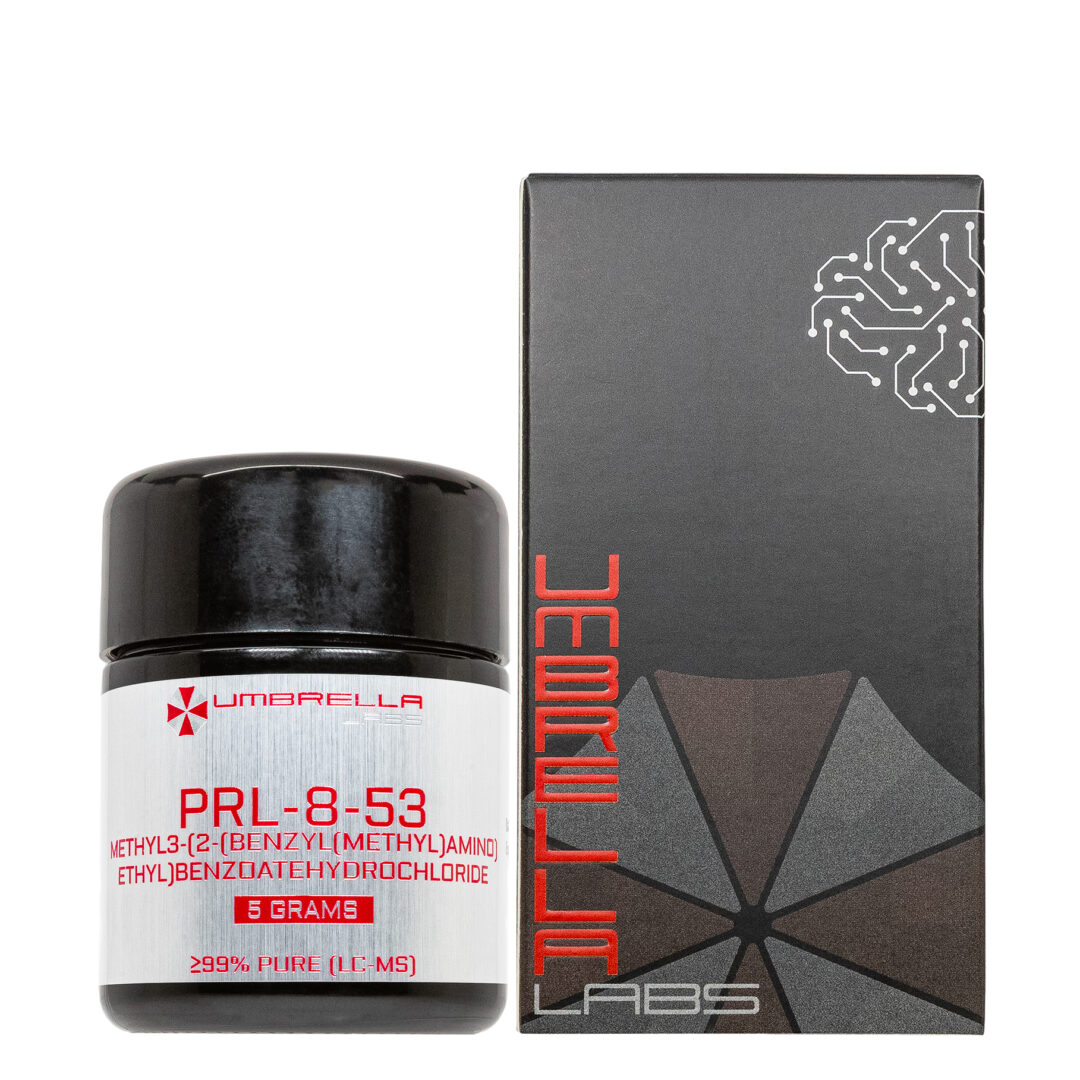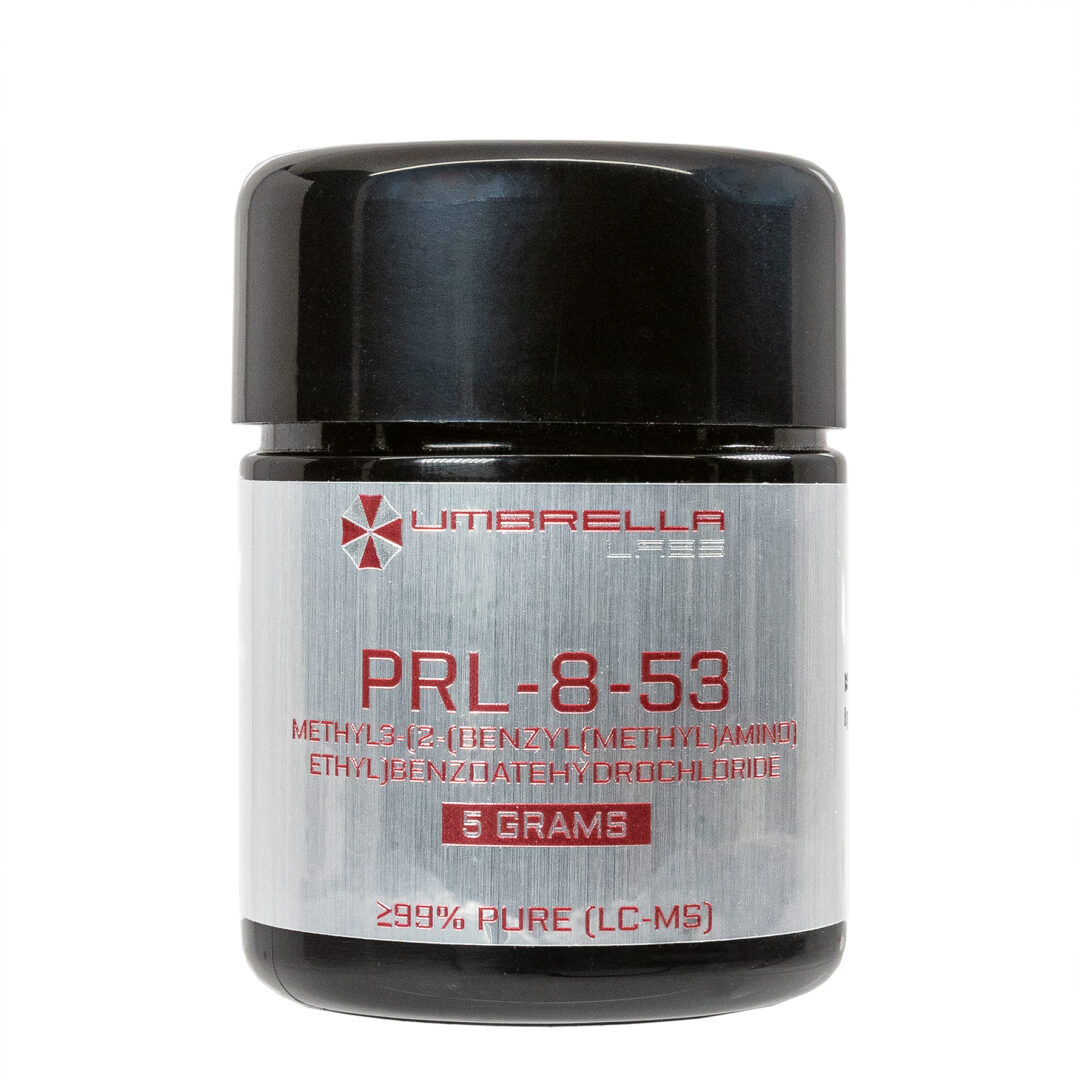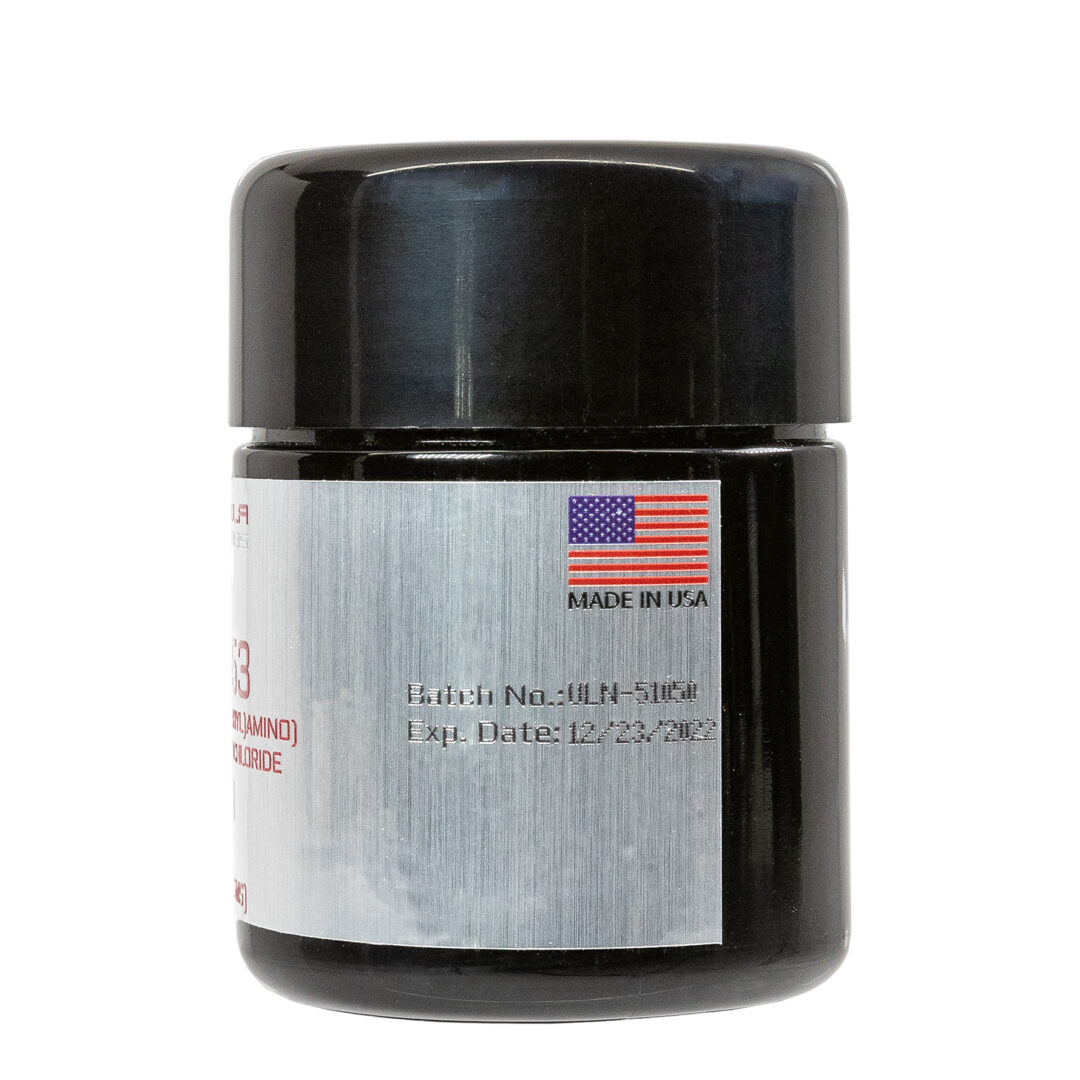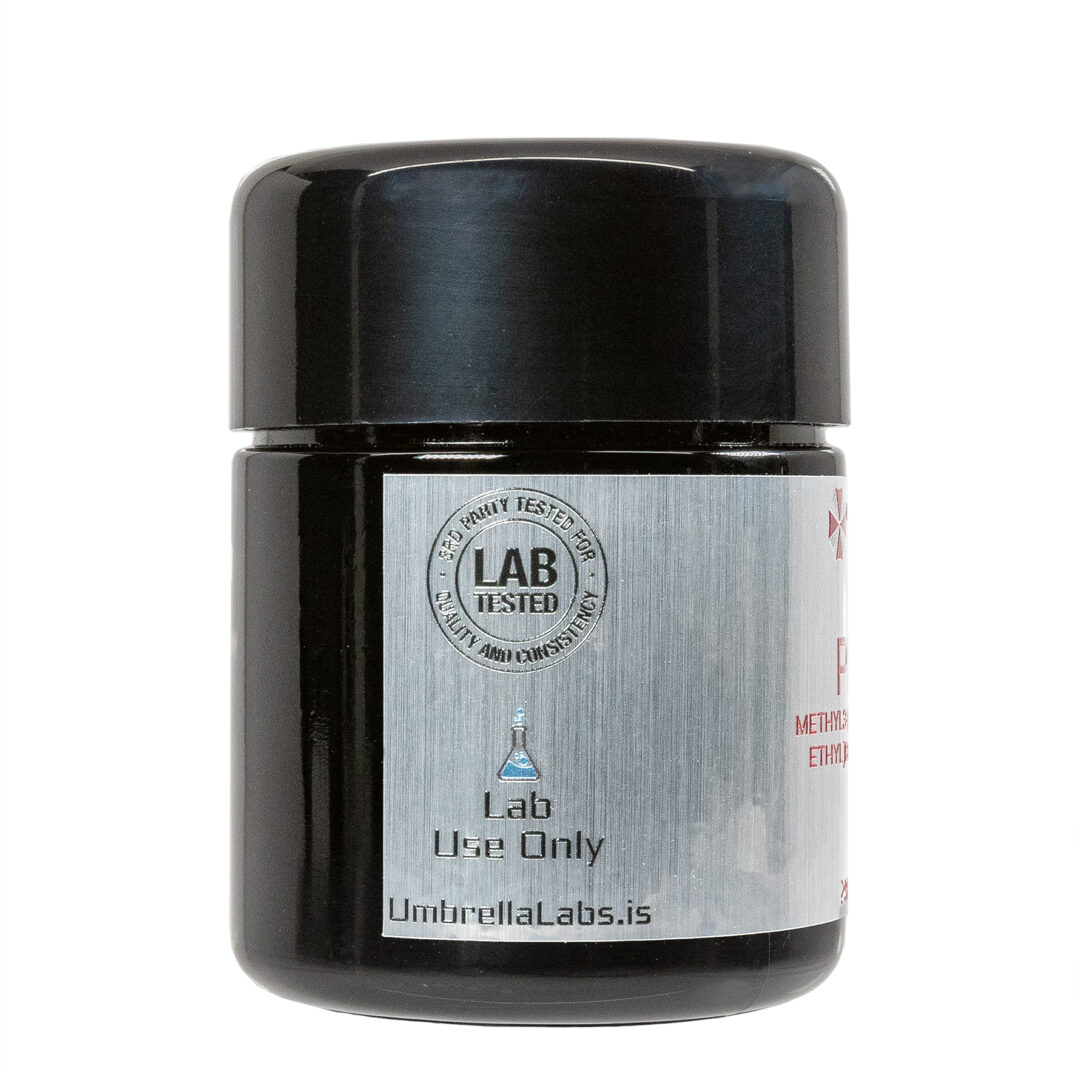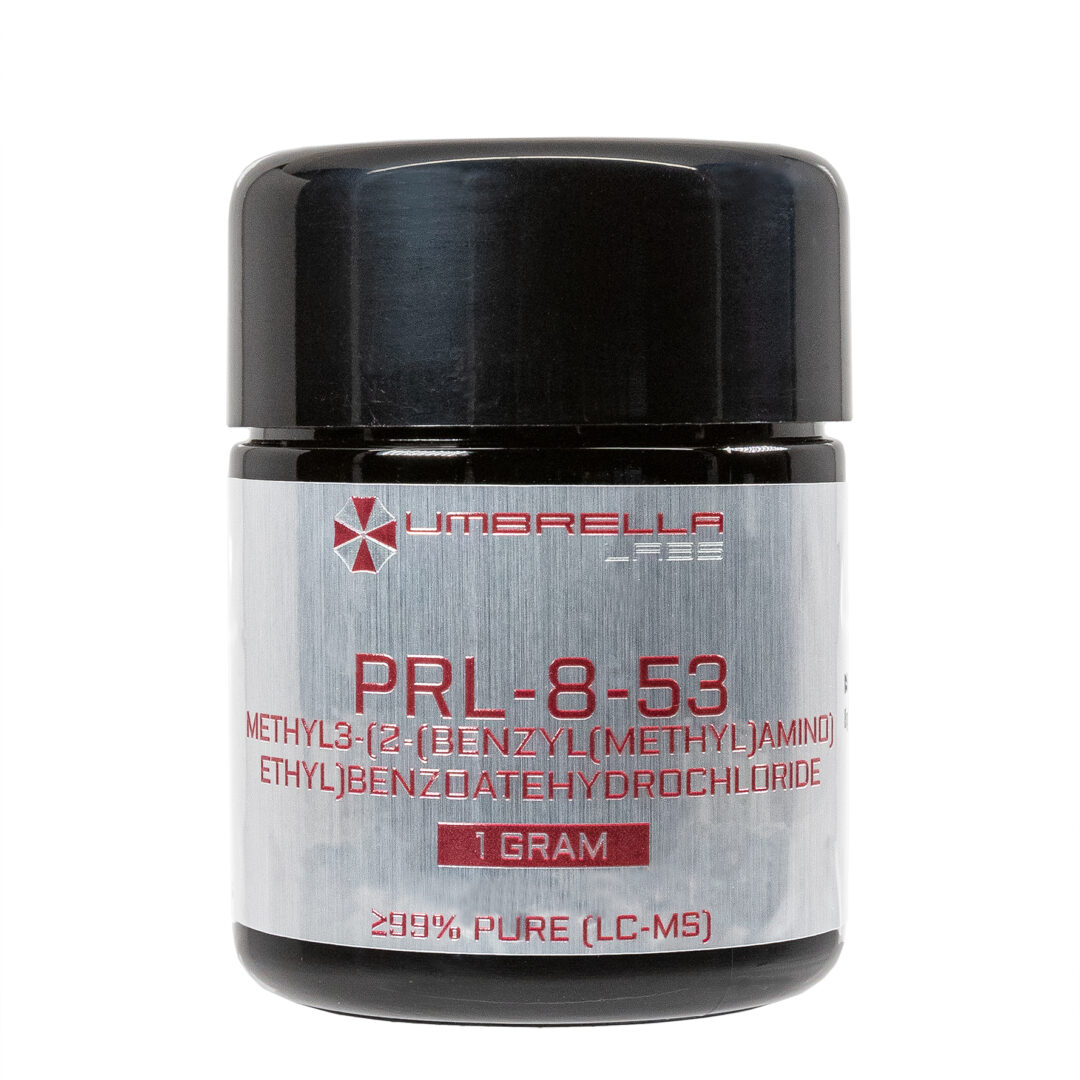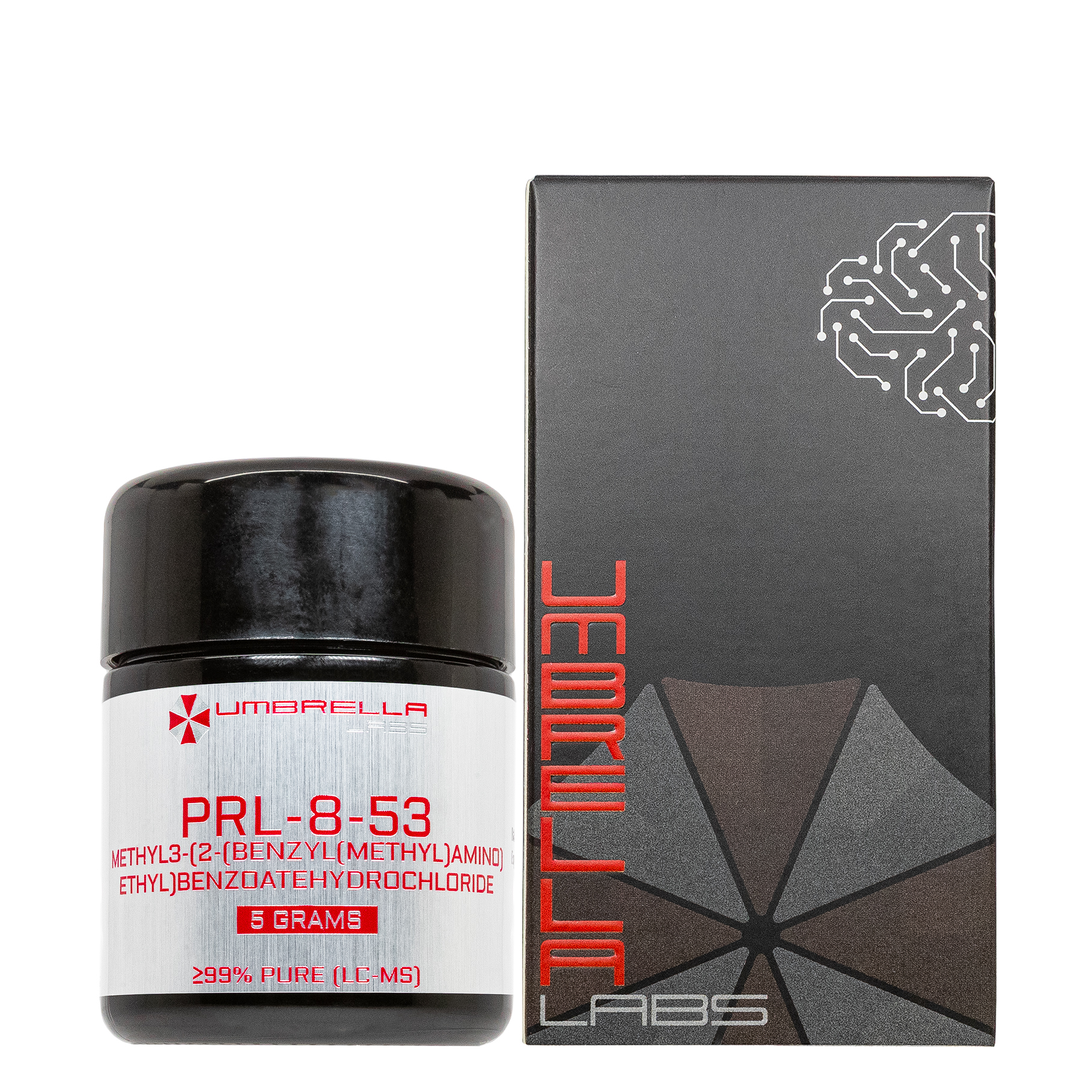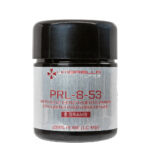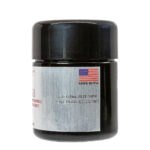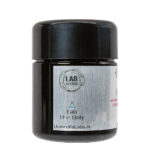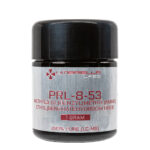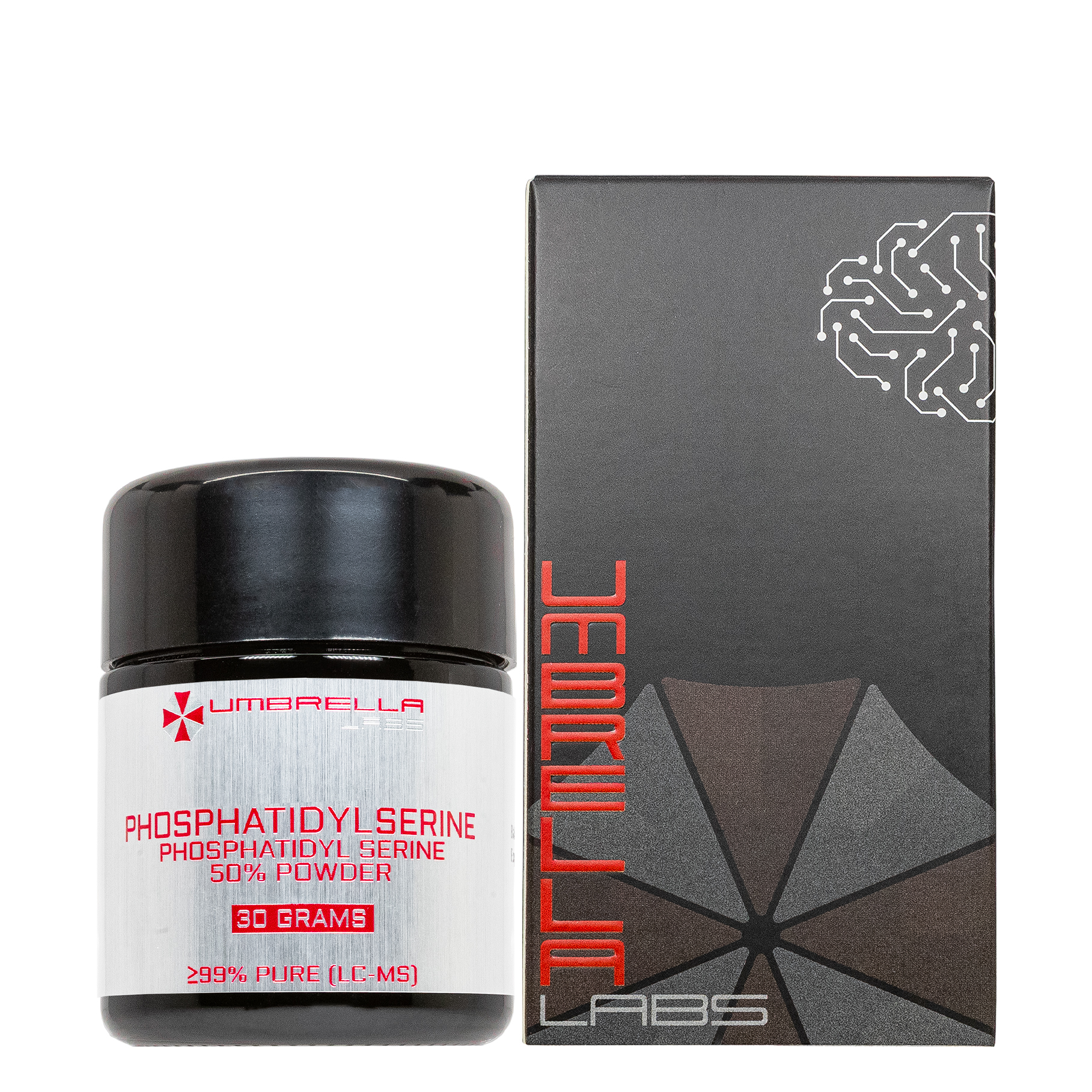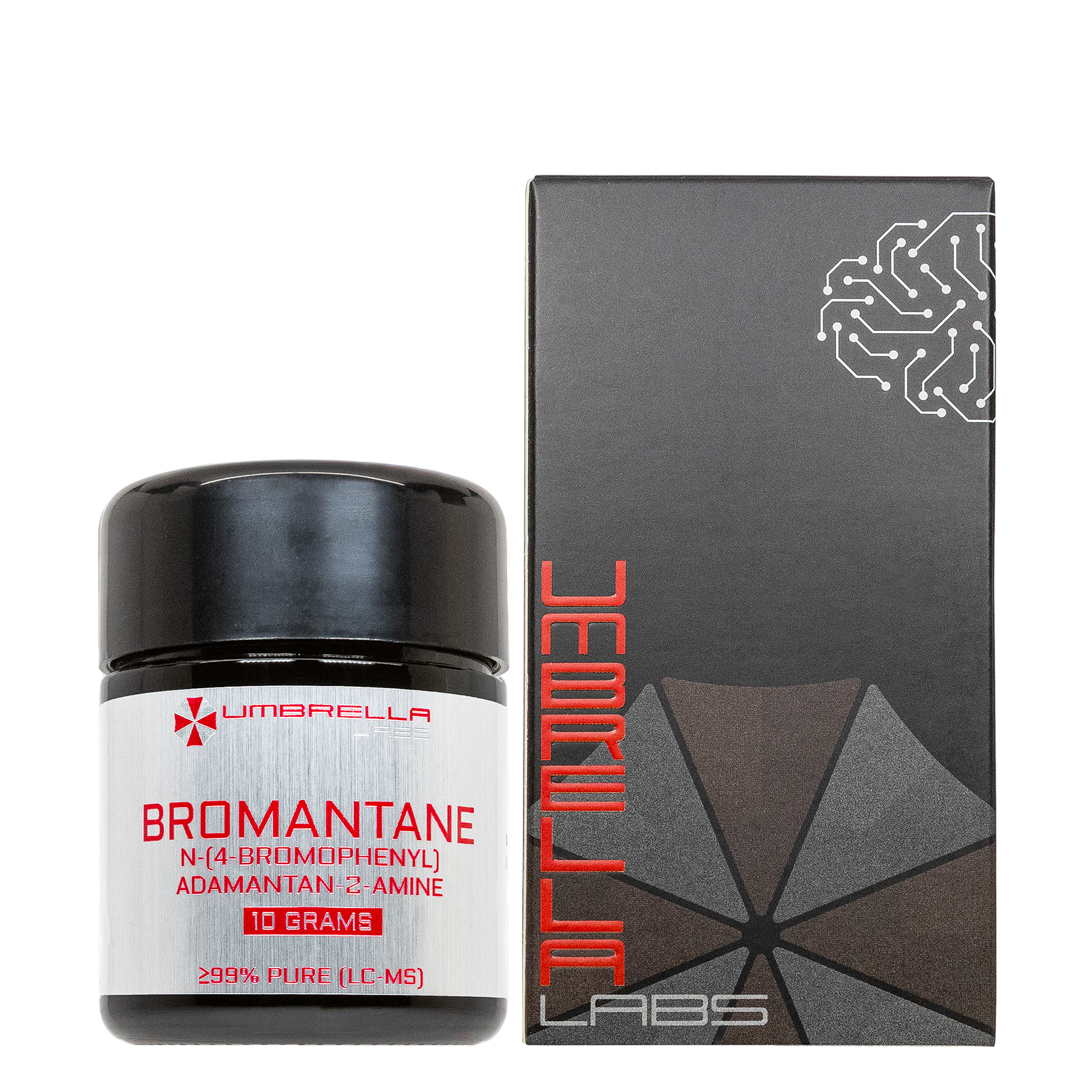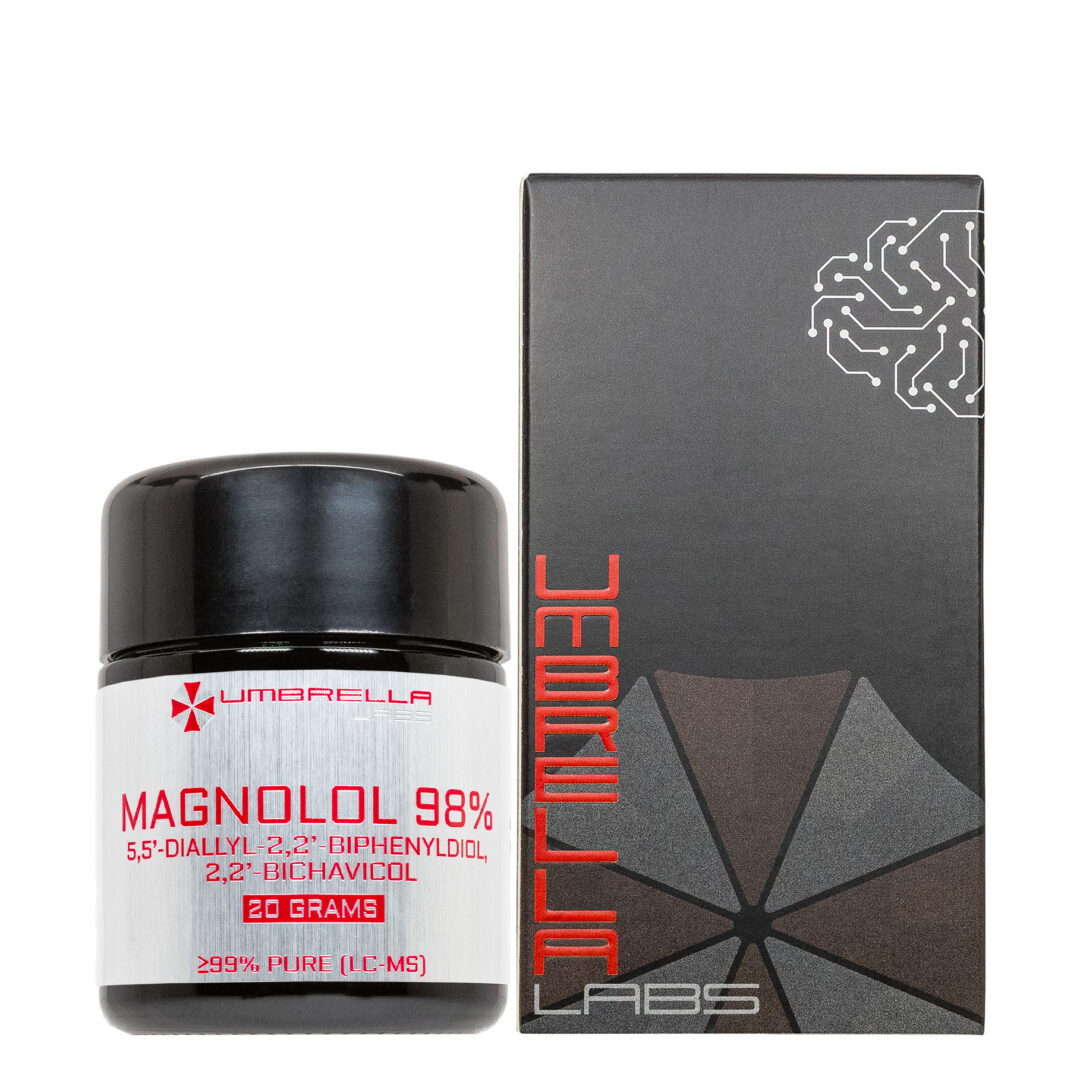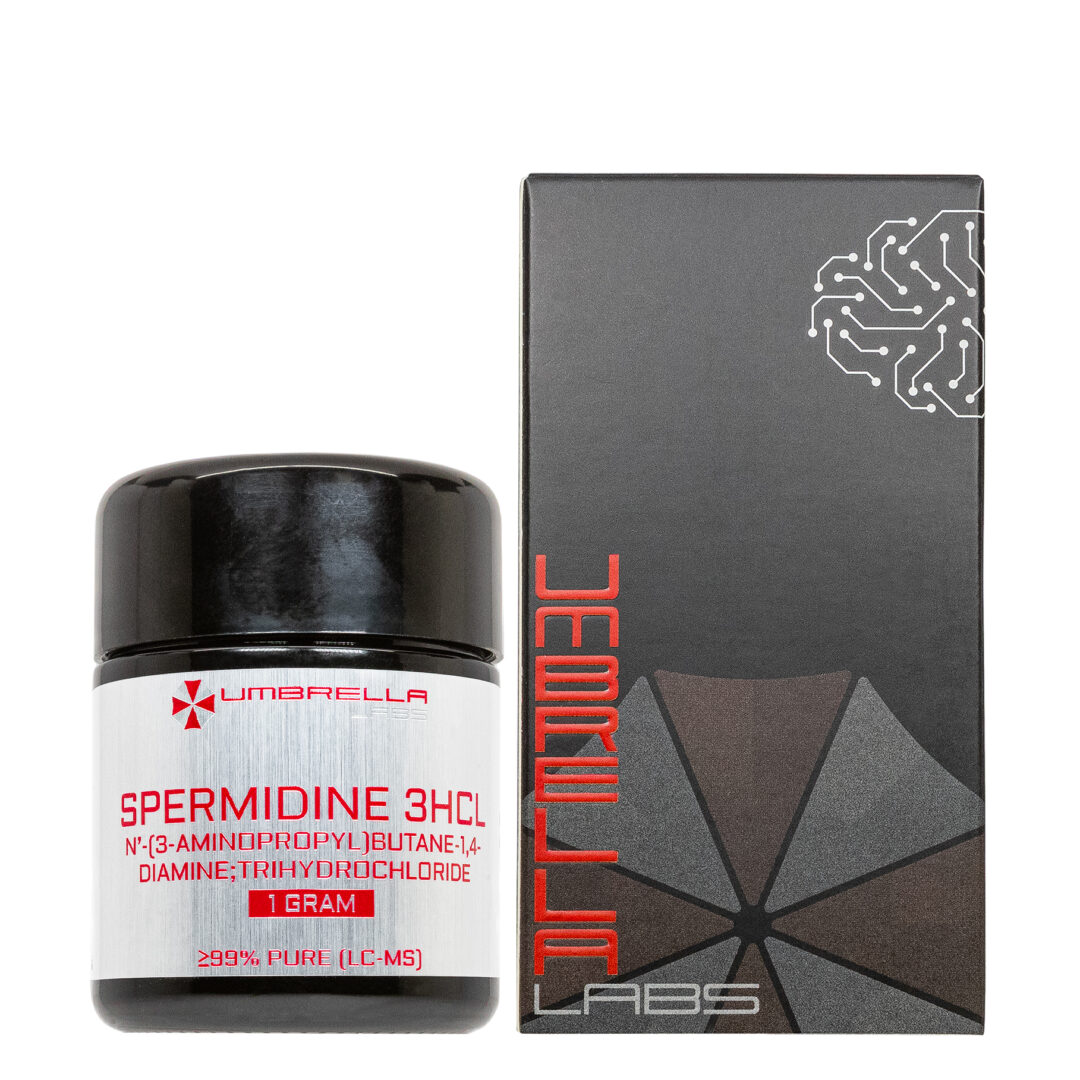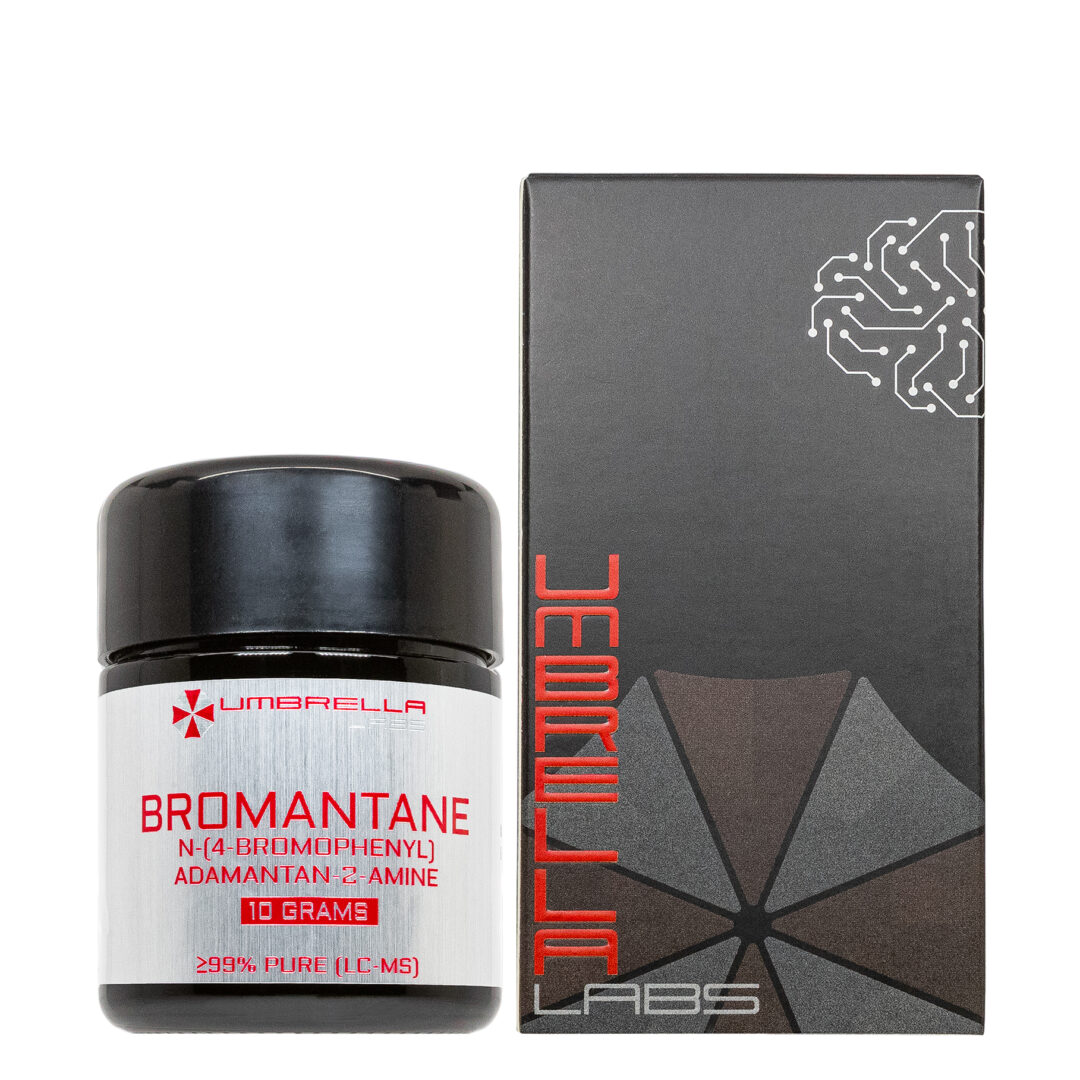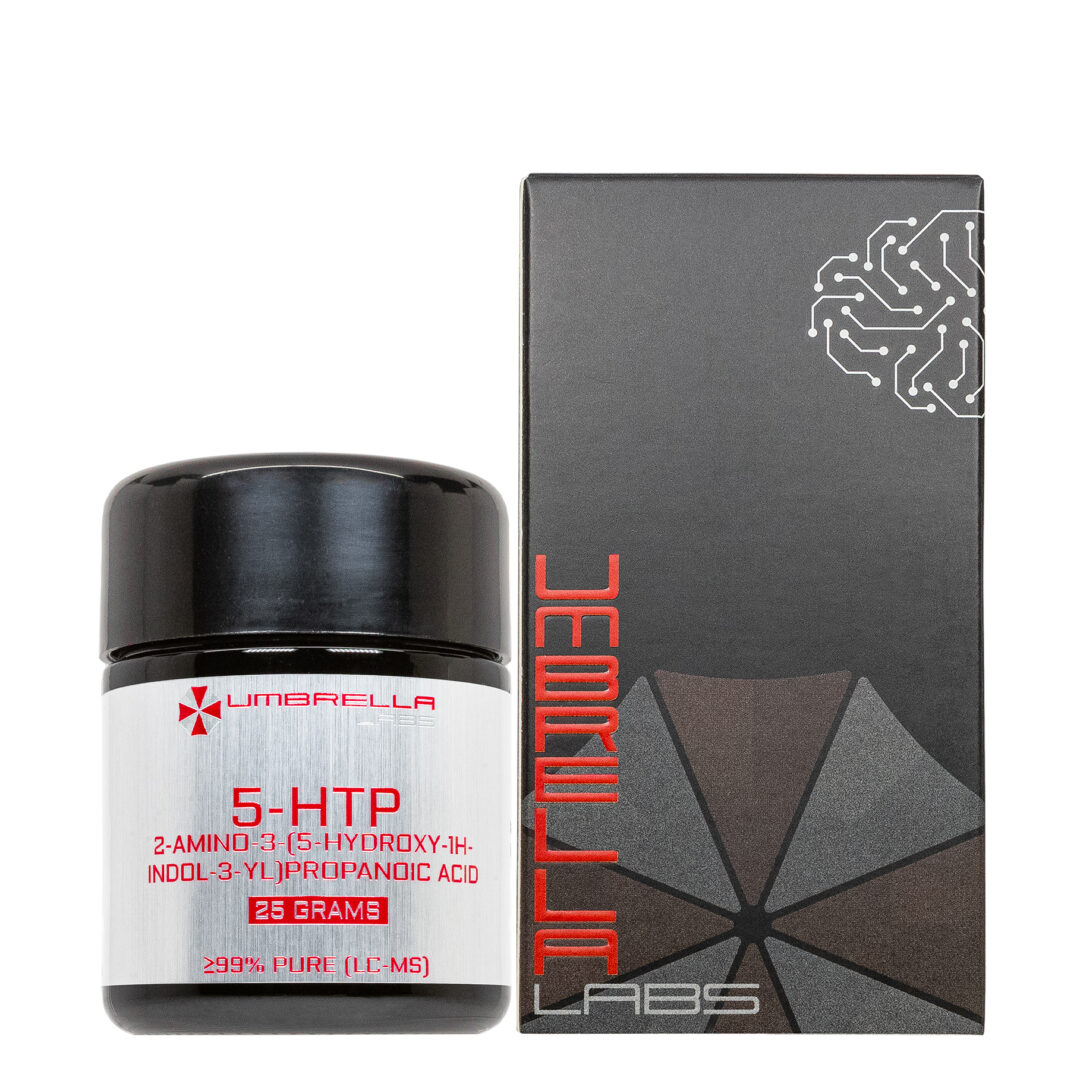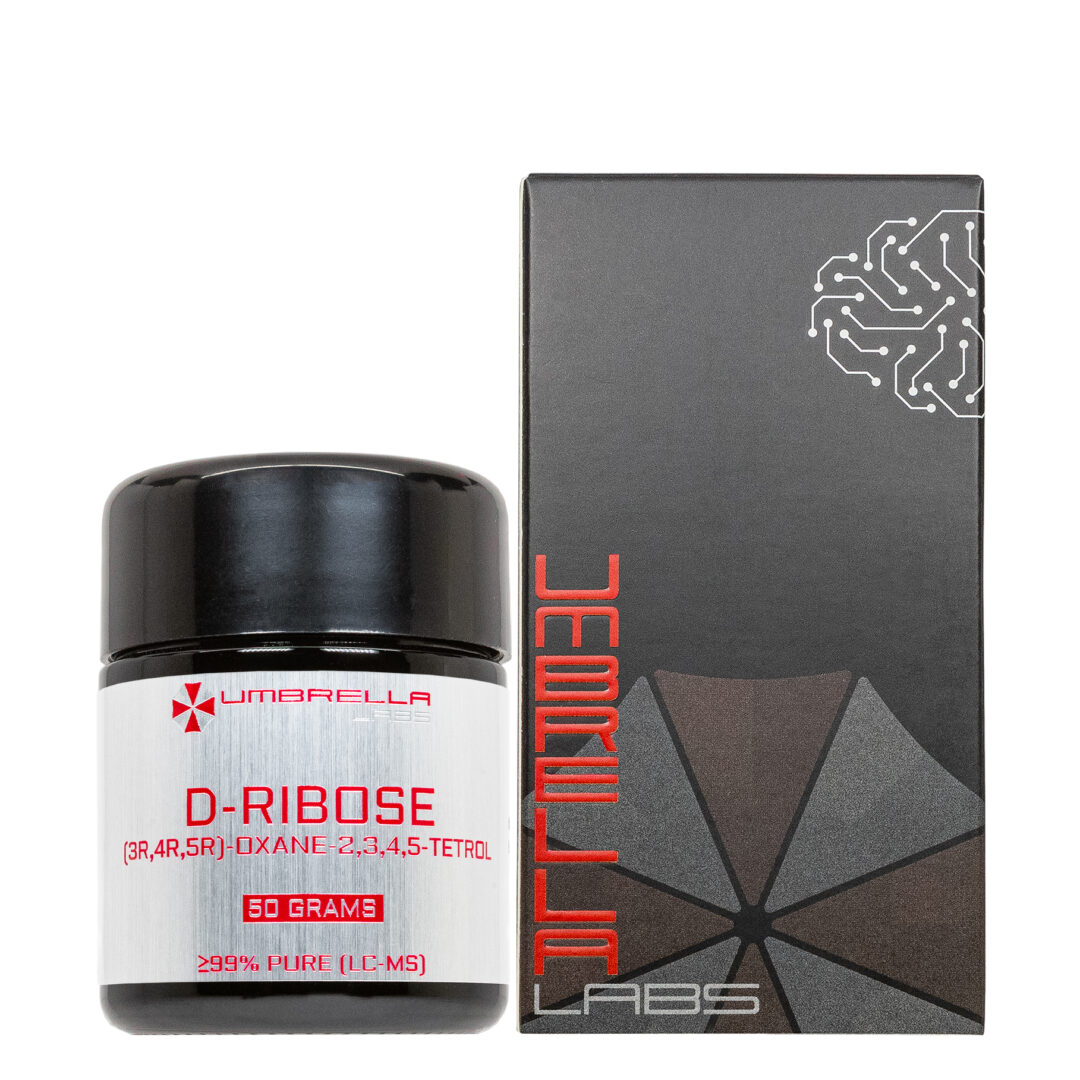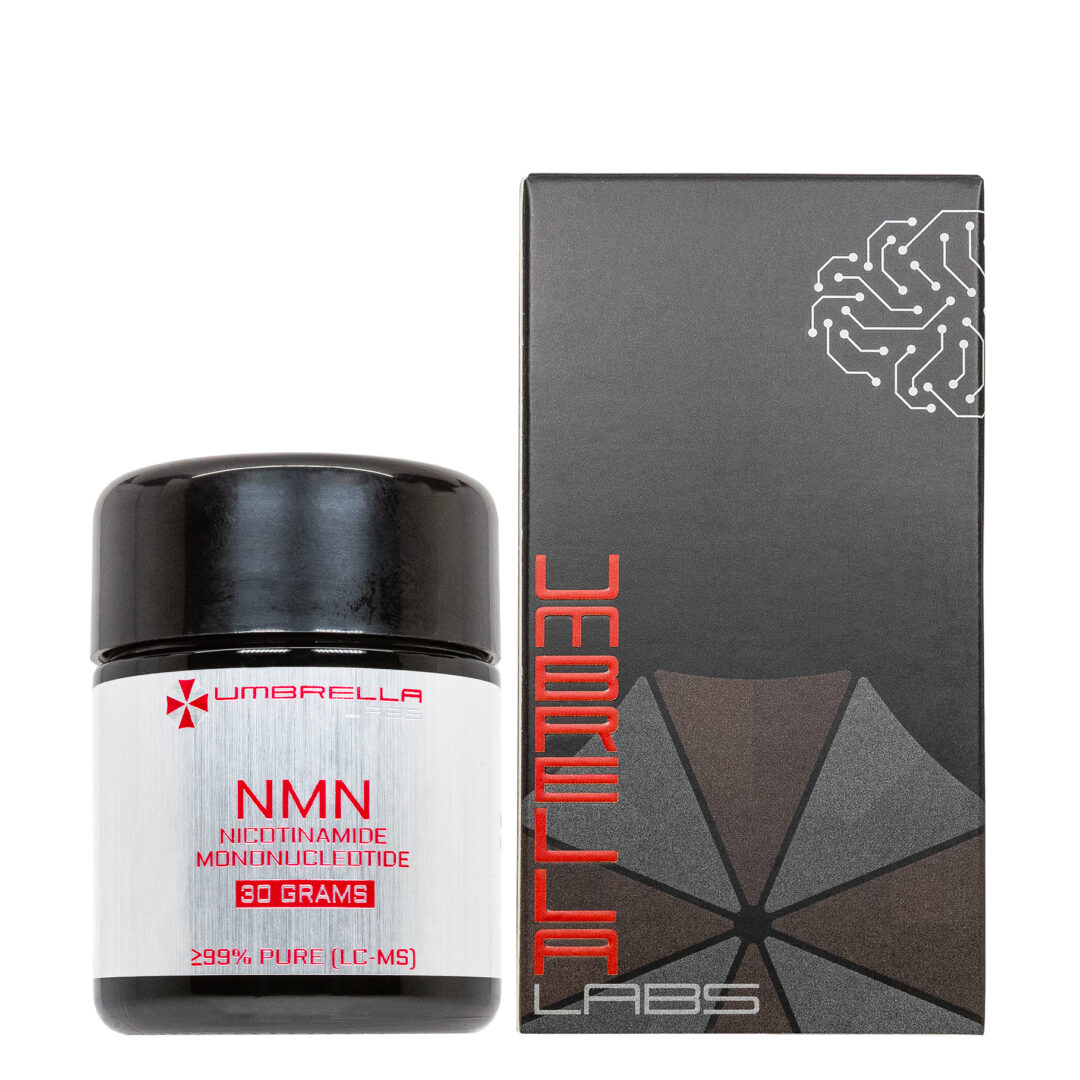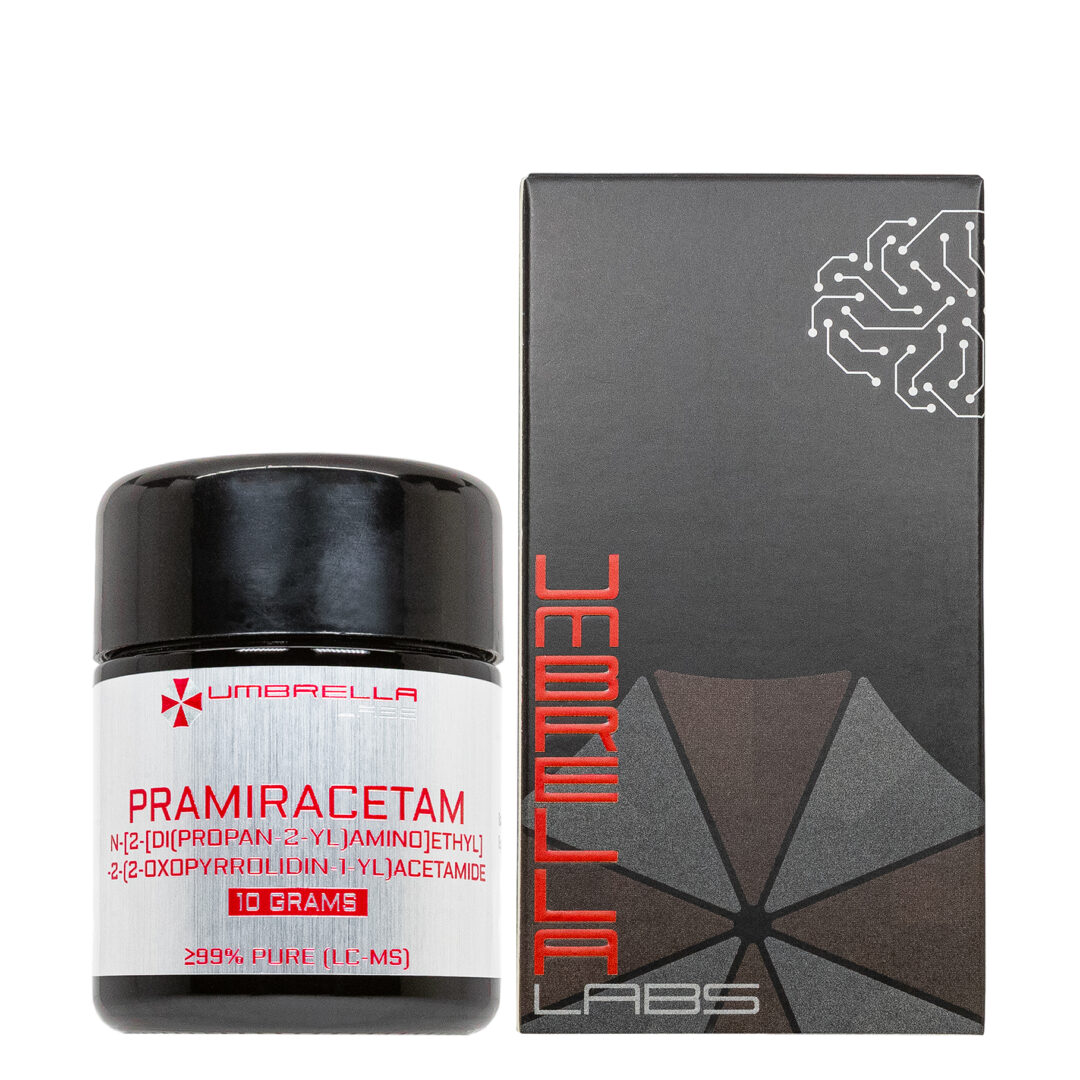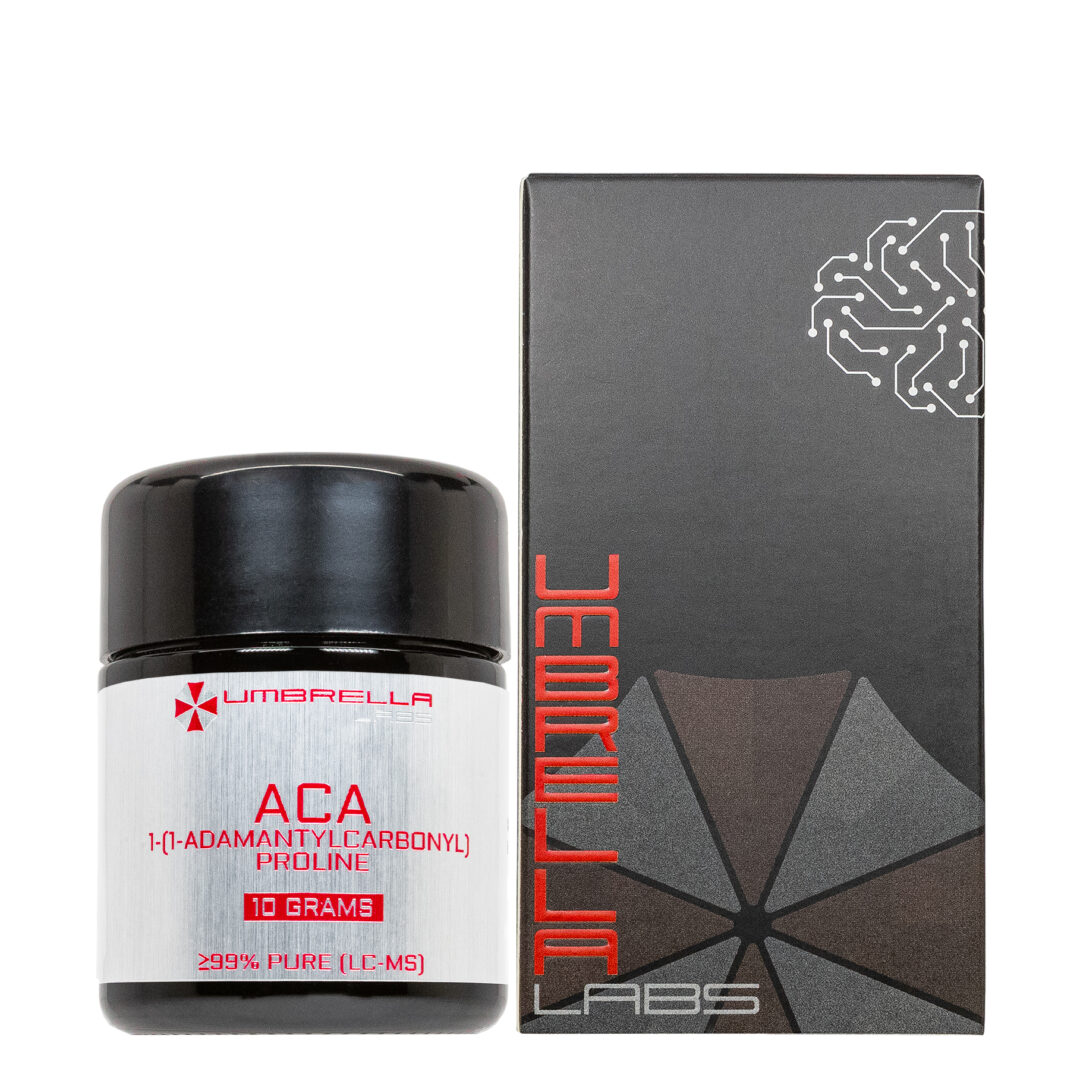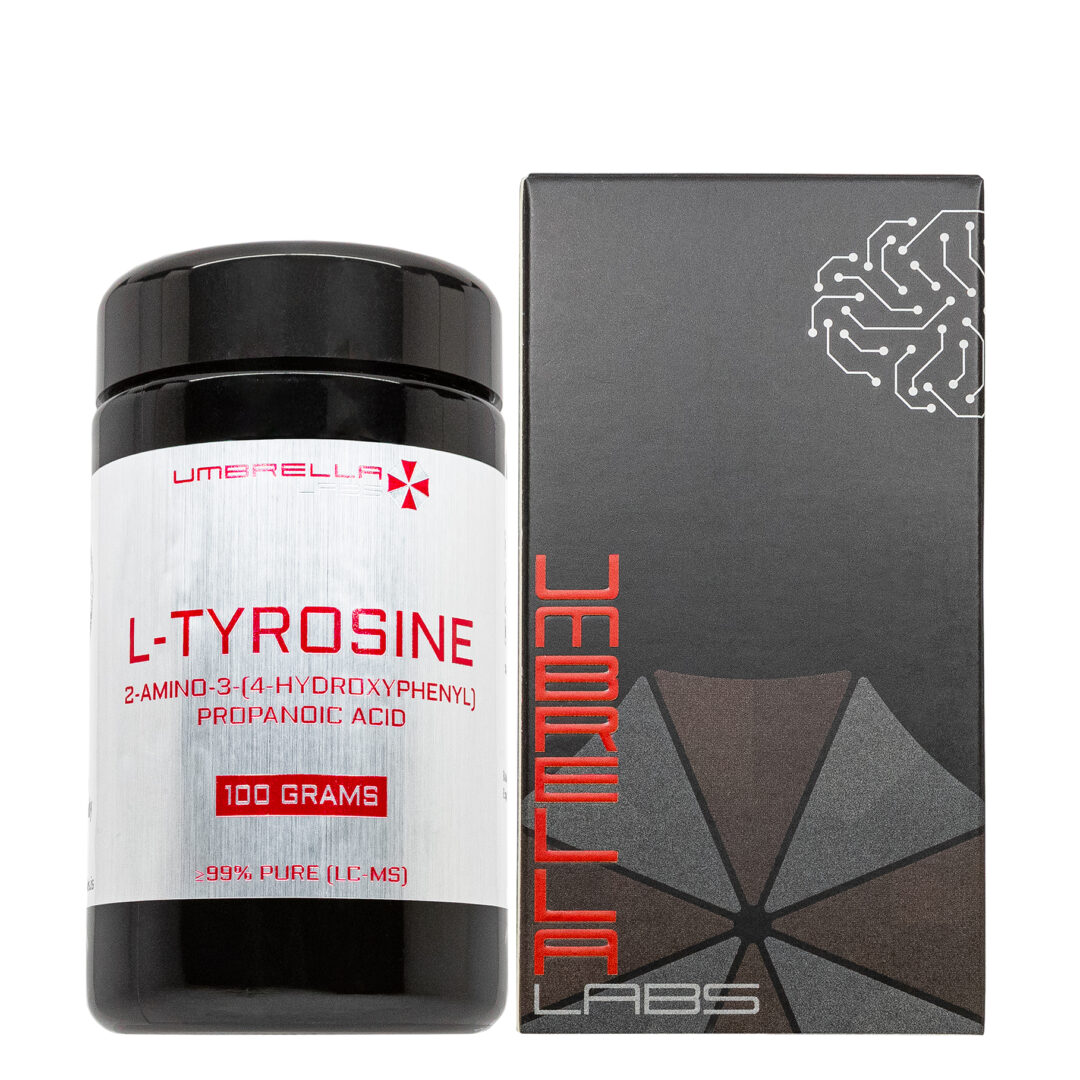PRL-8-53 POWDER
$38.99 – $139.99
PRL-8-53 is sold for laboratory research use only. Terms of sale apply. Not for human consumption, nor medical, veterinary, or household uses. Please familiarize yourself with our Terms & Conditions prior to ordering.
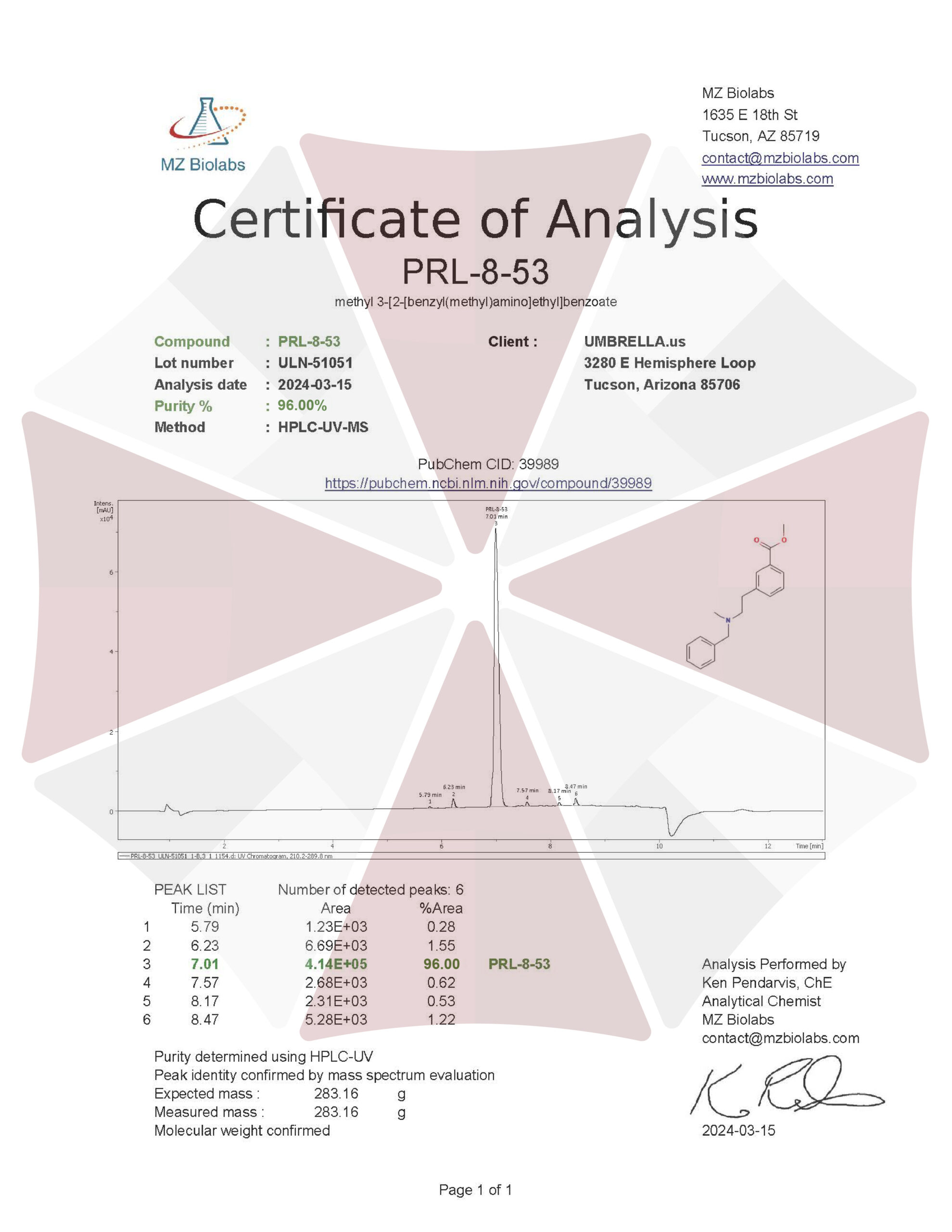
Also Available In:
- Description
- Additional information
Description
PRL-8-53 Nootropic Powder
![]()
![]()
![]()
![]()
![]()
![]()
![]()
![]()

| CAS Number | 51352-88-6 |
| Other Names | PRL 8 53, PRL853, BM2TE2XHK6, 51352-88-6, PRL-8-53 free base, Methyl 3-[2-[benzyl(methyl)amino]ethyl]benzoate, UNII-BM2TE2XHK6, DTXSID701045345 |
| IUPAC Name | methyl 3-[2-[benzyl(methyl)amino]ethyl]benzoate |
| Molecular Formula | C₁₈H₂₂ClNO₂ |
| Molecular Weight | 319.8 |
| Purity | ≥99% Pure (LC-MS) |
| Liquid Availability | |
| Powder Availability | |
| Gel Availability | N/A |
| Storage | Store in cool dry environment, away from direct sunlight. |
| Terms | All products are for laboratory developmental research USE ONLY. Products are not for human consumption. |
Methyl 3-(2-(benzyl(methyl)amino)ethyl)benzoate, more commonly referred to as PRL-8-53, is a synthetically made nootropic compound derived from benzoic acid and is best known for its ability to improve short term memory. While there is limited research on this compound, the information available emphasizes the efficacy of the treatment, primarily in animal subjects. Notable studies have tested the dopaminergic, serotonergic, and cholinergic actions of PRL-8-53, as well as how it affects animal performance in terms of avoidance learning.
Researchers Hansl et. Al examined the efficacy of PRL-8-53 as a dopaminergic agonist. The study began by administering apomorphine, another dopamine agonist, in order to increase gnawing behavior in rats. PRL-8-53 was given in combination with apomorphine at a dose of 4mg/kg. Combining these two compounds led to an increase in gnawing behavior associated with dopaminergic activity, as well as an improvement in condition learning. Results found that since administering PRL-8-53 further increased gnawing behavior rather than inhibiting it, researchers were able to conclude that PRL-8-53 can behave as a dopaminergic agonist. This is important to note considering that dopamine is heavily involved in memory retention and learning. Extensive evidence indicates that dopamine projections in the brain can modulate neuroplasticity and regulate cognitive abilities and working memory.
In addition to its effects of dopamine, PRL-8-53 has been shown to also alter the action of acetylcholine and serotonin, two neurotransmitters that are related to memory and cognition. Acetylcholine (ACh) has been shown to affect memory by promoting the conduction of neurons as well as accelerating the transmission of information. Evidence shows that increasing ACh levels leads to enhanced long term and short term memory and improvement of overall brain functioning. As ACh is removed from circulation by the enzyme acetylcholinesterase (AChE) researchers have linked diseases like Alzheimer’s and dementia to the overexpression of AChE. That being said, evidence shows that memory loss disorders could potentially be treated by the administration of AChE inhibitors so circulating levels of Ach in the brain are increased (https://www.sciencedirect.com/science/article/pii/S2324242622000985).
In addition to manipulating ACh, research has found that PRL-8-53 can alter the effects of serotonin in the brain. Serotonin imbalances result in feelings of anxiety, depression, and sleep disruptions. Since PRL-8-53 can lead to changes in serotonin production, researchers initially believed that this could lead to fewer instances of these unproductive states. However, more extensive research has been conducted emphasizing how serotonin directly affects the hippocampus, particularly the CA1 region, which is the primary source of memory in the brain. That being said, studies conducted on mice determined that when serotonin levels were low or blocked, spatial memory was decreased, However, when serotonin was balanced spatial memory was highly improved. Overall, further research should be conducted in order to see the exact effects PRL-8-53 has on serotonin levels and how these changes directly relate to the improvement of memory and learning
(https://www.medicalnewstoday.com/articles/321774#The-hippocampus-and-memory).
Furthermore, the effect of PRL-8-53 on conditioned avoidance learning was measured in a dose-dependent manner in animal test subjects. Researchers Hansl et. Al administered doses ranging from 5-20 mg/kgs. Their recall was then tested immediately after administration, 24 hours after, and 3 days after. When compared to a placebo, the subjects in the experimental group were successful in recalling information for 24-96 hours following administration of PRL-5-83. In aged subjects, the rate of recall increased to 108-152% while high performing subjects receiving the placebo only had a rate of recall of 7.9-14%. This study also highlighted the fact that these results were not consistent when the subjects were tested directly after administration of PRL-8-53. Rate of recall in subjects receiving the placebo did not improve at all, and in aged subjects that saw the most improvement in the initial examination only experienced 31.4% increase in recall (https://examine.com/supplements/prl-8-53/research/#ref-1).
This compound was discovered in the 1970’s by Nikolaus Hansl who currently owns the patent. Further research needs to be conducted regarding the efficacy of this compound as all current research has been funded and conducted by Hansl himself.
The nootropics sold by Umbrella Labs are sold for laboratory research only. The description above is not medical advice and is for informative purposes only.
PRL-8-53 is sold for laboratory research use only. Terms of sale apply. Not for human consumption, nor medical, veterinary, or household uses. Please familiarize yourself with our Terms & Conditions prior to ordering.
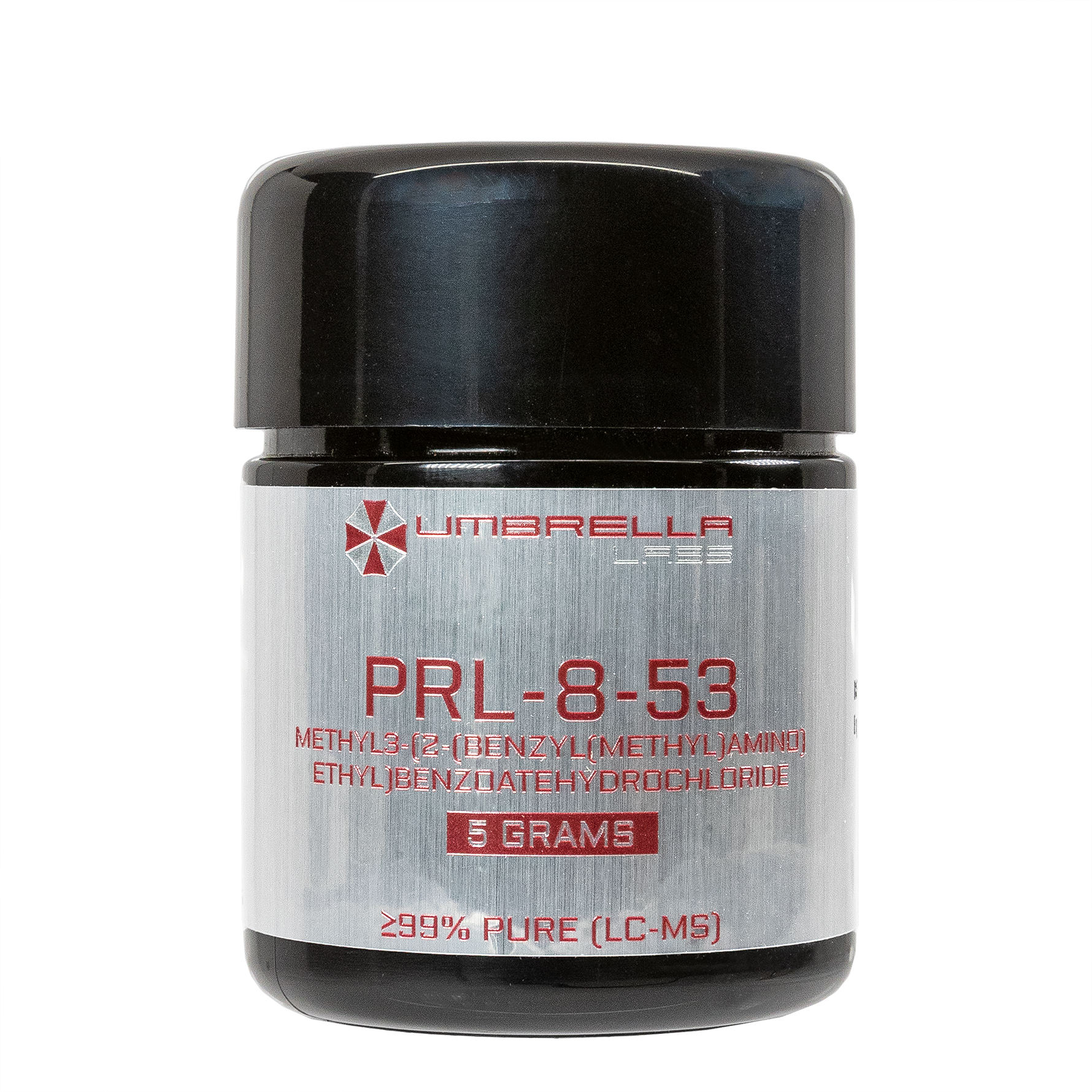
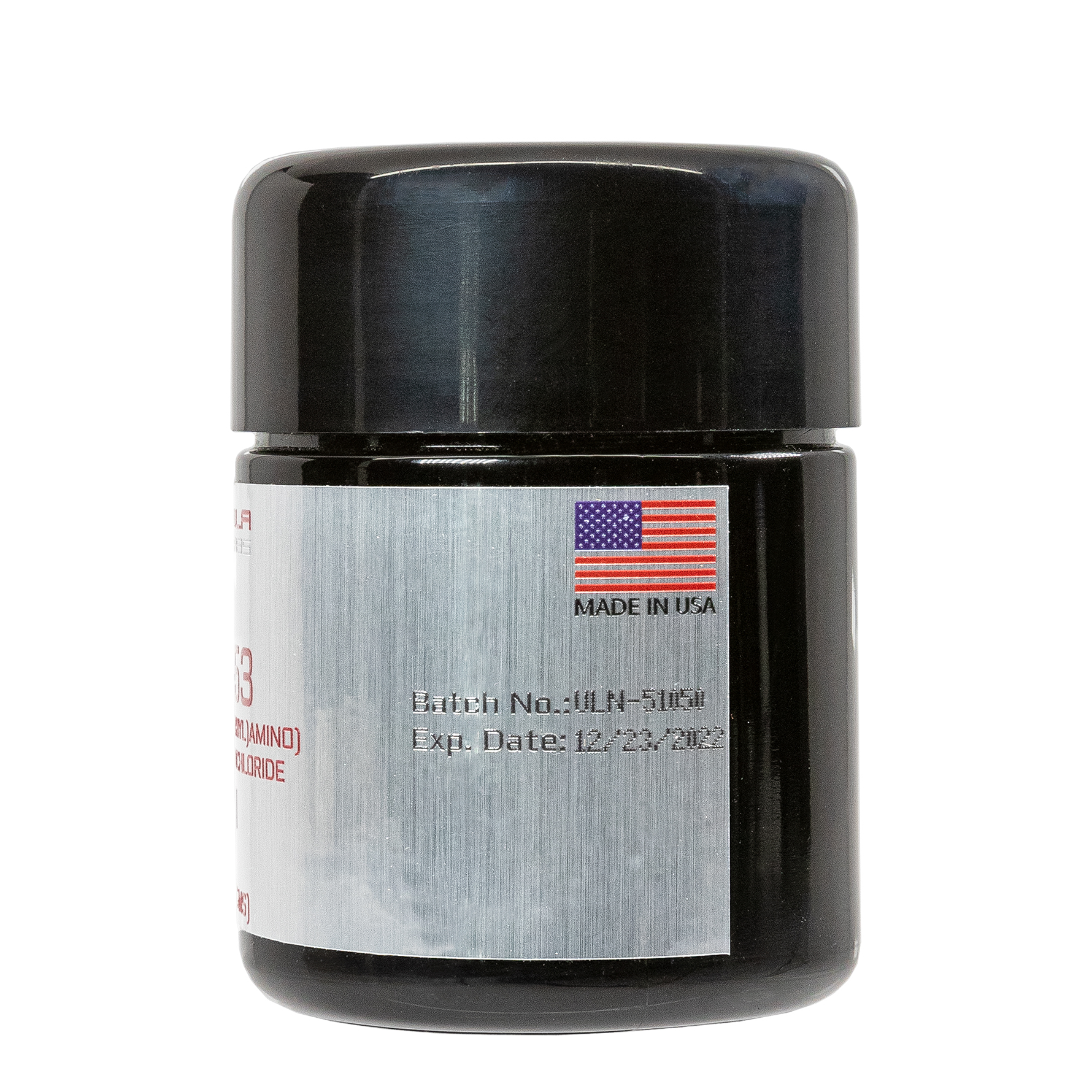
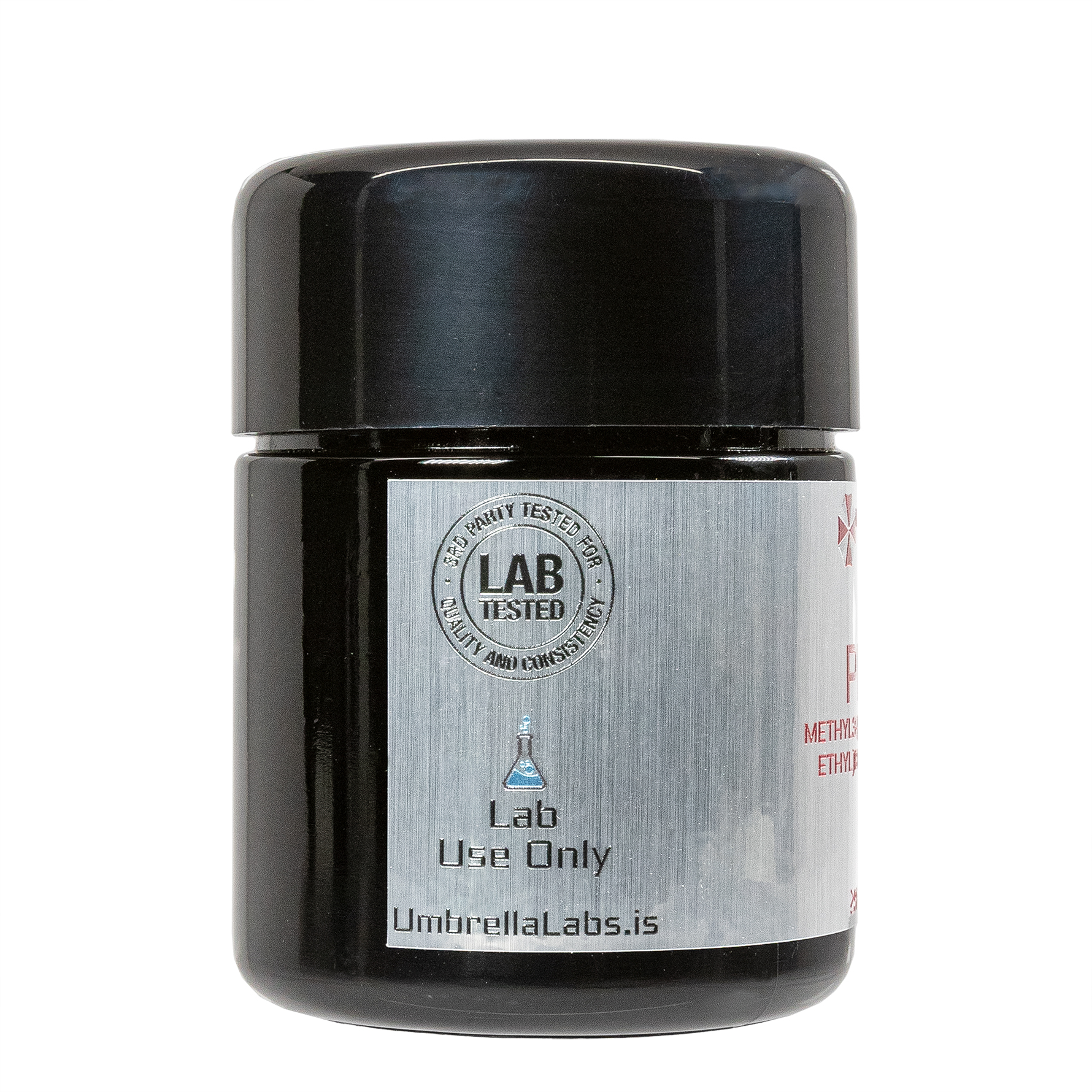
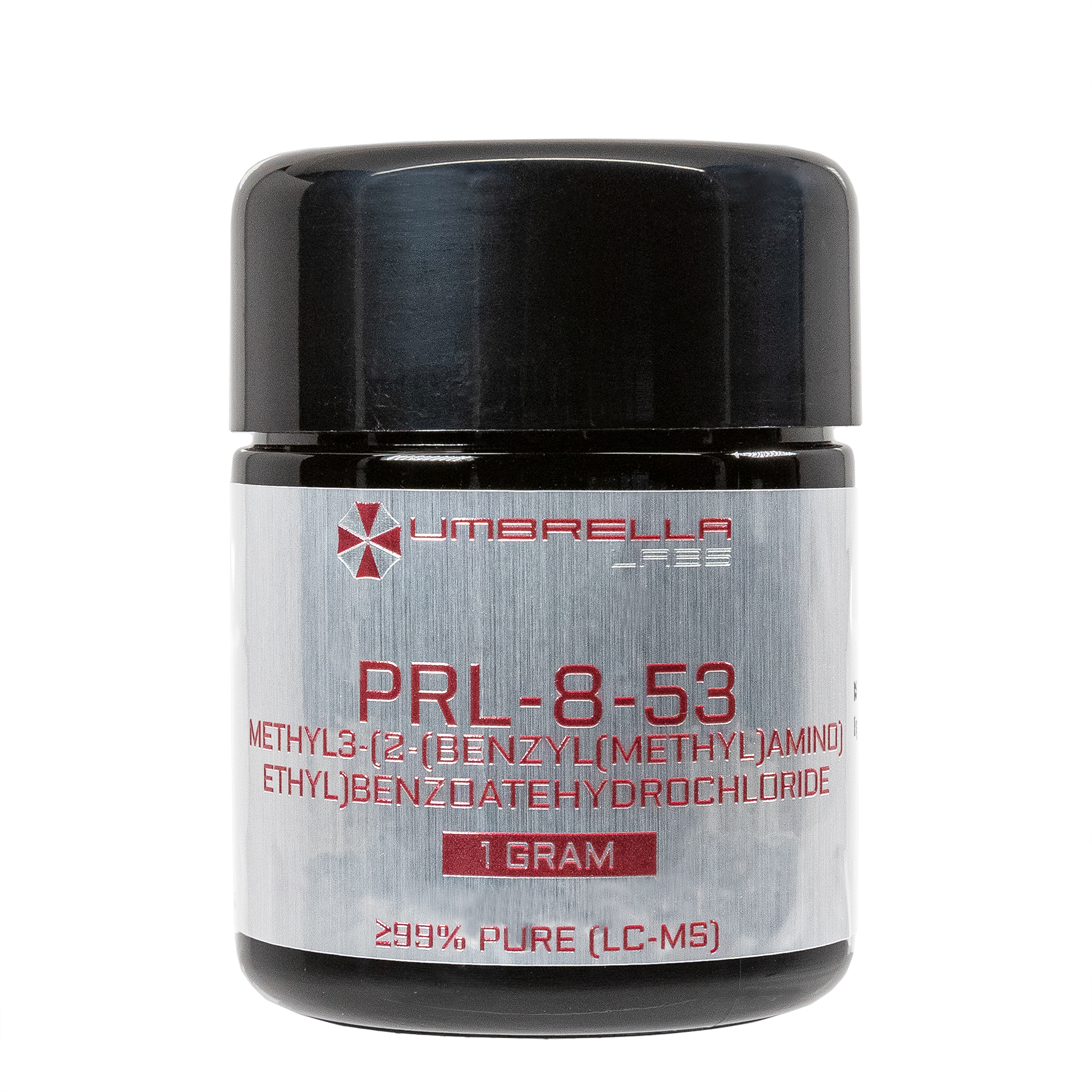



| File Name | View/Download |
| 2024-03-15-Umbrella-Labs-PRL-8-53-Certificate-Of-Analysis-COA.pdf |
VIEW CERTIFICATES OF ANALYSIS (COA)
Additional information
| Options |
|---|

